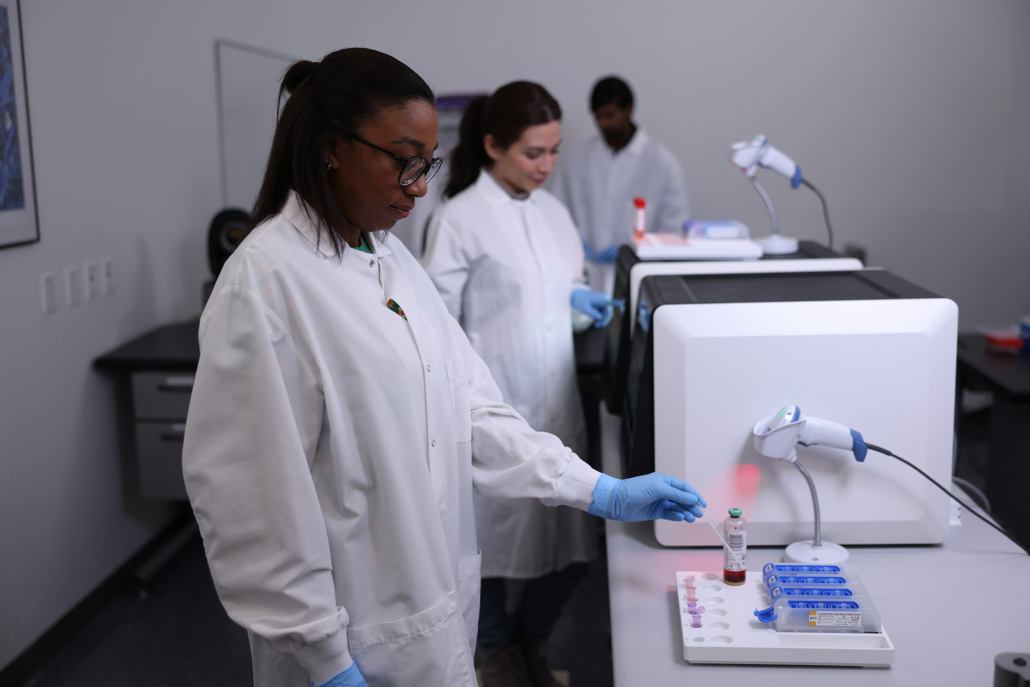ASM Releases Evidence-Based Guidelines for Rapid Bloodstream Infection Testing
By Diasorin
Recommendations include evidence from scientific literature to inform best practices in rapid diagnostics and communication of results

New ASM Guidelines Aim to Improve Bloodstream Infection Testing and Sepsis Outcomes
New recommendations from the American Society for Microbiology on bloodstream infection testing are designed to help clinical laboratory teams make effective decisions about how to deliver optimal results and improve the outcomes of patients at risk of sepsis. The recommendations should also prove useful to pharmacists, infectious disease clinicians, hospital administrators, and other members of the clinical community.
This report is much needed and has been a long time coming. ASM first attempted to achieve consensus on recommendations back in 2016, but at the time, its expert panel determined that there was insufficient evidence in the scientific and clinical literature to define best practices in rapid diagnostic testing for bloodstream infections. Nearly a decade later, ASM teamed up with the Centers for Disease Control and Prevention and Battelle to assemble a new panel tasked with conducting a review and meta-analysis of published reports on this topic. While more evidence will always be welcome, this time the group was able to produce several recommendations based on available data. According to the manuscript, “The purpose of this study was to refresh the body of knowledge and evaluate the current evidence for the effectiveness of rapid diagnostic practices to decrease the time to targeted therapy (TTT) and improve outcomes for hospitalized patients with BSIs.” They define rapid diagnostics as those that take about 2 hours or fewer to return results.
Key Recommendations: Rapid Testing and Communication Are Critical
Of the eight total recommendations included in the report, five are classified as strong or moderate. In short, the panel recommends the implementation of rapid diagnostic tests for patients with positive blood culture results, combined with an active communications strategy for sharing actionable reports with clinical colleagues. According to the evidence reviewed, this approach would help get patients on targeted therapies faster, shorten hospital stay durations for ICU and other patients, reduce longer stays caused by infection complications, and possibly decrease the 30-day mortality rates for patients with bloodstream infections. Molecular tests such as nucleic acid amplification tests are covered under the groups of rapid diagnostic tools recommended.
Why Communication Strategies Matter in Diagnostic Stewardship
The panel’s focus on a communication strategy was noteworthy. Throughout the recommendations, the laboratories make it clear that using rapid diagnostics without a clear plan to communicate results with appropriate clinical counterparts was not sufficient to change outcomes for patients. This might seem obvious, but in the case of bloodstream infections, timeliness is essential. Without a clear method for quickly sharing clinical information with the right people, the results of any diagnostic tool—even the fastest of tests—could be received too late to make a difference in patient care.
Diasorin’s Commitment to Rapid Bloodstream Infection Testing
At Diasorin, we understand how important it is to generate fast, reliable results for patients suffering from bloodstream infections. These are serious conditions associated with high rates of morbidity and mortality, which is why we have offered rapid diagnostic tests in this area for years. Our newest product line for bloodstream infection testing was designed for the LIAISON PLEX® System, a sample-to-answer device for multiplex molecular diagnostic testing. We offer three FDA-cleared tests to help clinical laboratories comply with diagnostic stewardship goals: the LIAISON PLEX® Gram-Positive Blood Culture Assay, the LIAISON PLEX® Gram-Negative Blood Culture Assay, and the LIAISON PLEX® Yeast Blood Culture Assay. Each test is intended for use after Gram staining, with those results informing which diagnostic test is appropriate for each patient. By pairing our tests with the standard Gram staining process, we’re also ensuring that they fit neatly into existing laboratory workflows for seamless implementation.
To learn more about bloodstream infection testing options from Diasorin, click here.

